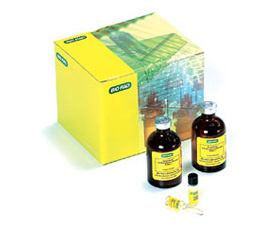Cell Lysis: The First Step in the Extraction of Molecules and Structures
In most purification protocols for nucleic acids, proteins, membranes, or organelles, the first step is usually cell lysis. The type of lysis buffer used depends on the types and source of cells, the desired final molecule or structure, and the level of their functionality. The protocols and lysis buffers for proteins are generally different from the lysis buffers used for nucleic acids.
Lysis Buffer for Proteins and Organelles
There are a number of different types of lysis buffer for protein extraction. The type of lysis buffer used depends on the cell source (tissue culture, plant, bacteria, fungi, etc.), and whether the cells are in a structure and the type of structure. For instance, lysis of cells in tissue culture is much easier than lysis of cells in a tissue with a high level of contractile proteins such as skeletal muscle.
One thing that most lysis buffers for proteins have in common is the addition of protease inhibitors. After cell lysis, proteases are no longer carefully regulated, compartmentalized, and trafficked. Proteins in lysis buffer become targets for free proteases. Proteins that are sensitive to one or more types of proteases can become rapidly fragmented. Therefore, typically a cell lysis buffer will have a cocktail of protease inhibitors. If dephosphorylation is a concern, phosphatase inhibitors are also added to the lysis buffer.
Most lysis buffers for extraction of proteins, membranes, and organelles contain one or more detergents. The choice of detergent is usually determined empirically and depends on the protein(s) and the tissue source. Generally the mildest detergent that is effective is used to maintain maximal functionality, and in the case of membranes and organelles, to keep the membrane intact. Detergents commonly found in cell lysis buffers are generally nonionic or zwitterionic, such as CHAPS, deoxycholate, Triton™ X-100, NP40, and Tween 20.
If the protein is being isolated for analysis by SDS-PAGE or IEF and functionality is not required, the lysis buffer will usually contain chaotropic agents such as urea and thiourea and often higher detergent concentrations or the anionic detergent, SDS. This type of buffer will both extract and denature the proteins.
Bio-Rad offers a number of kits for total protein extraction with lysis buffer formulations containing various chaotropes and zwitterionic detergents tailored to the particular application.
Lysis Buffer for Nucleic Acids
Lysing cells for extraction of nucleic acids is in some ways much easier than extraction of proteins. Nucleic acids are much more resistant to denaturation than most proteins, so a denaturing lysis buffer can be used. The type of lysis buffer depends on the type of nucleic acid, such as genomic, mitochondrial, or plasmid DNA, and total or a subtraction of RNA, as well as the cell source.
Obtaining intact RNA is more exacting than isolating DNA, due to the presence of RNases. Cell lysis buffer for RNA extraction is highly denaturing and is usually composed of phenol and guanidine isothiocyanate. RNase inhibitors are usually present in the lysis buffer, since RNases can be very resistant to denaturation and remain active.
For extraction of DNA the lysis buffer will commonly contain SDS. In most kits for plasmid extraction, the buffer will contain sodium hydroxide as well as SDS, for alkaline lysis. The addition of potassium acetate to this lysis buffer allows renaturation of the plasmid DNA but not the bacterial DNA, which precipitates.
Since cell lysis and extraction of nucleic acids are not subject to as many variables as for proteins, most nucleic acid extraction can be done with one of a few kits. The kits typically contain a cell lysis buffer and an appropriate nucleic acid–binding matrix.
Bio-Rad offers a range of kits for nucleic acid sample preparation and purification, all including a cell lysis buffer optimized for each kit: total RNA isolation from various cell types, plasmid and genomic DNA extraction, agarose gel extraction, and cleanup of radiolabeled probes, nick translations, plasmid, and PCR reaction mixtures.
Related Topics


